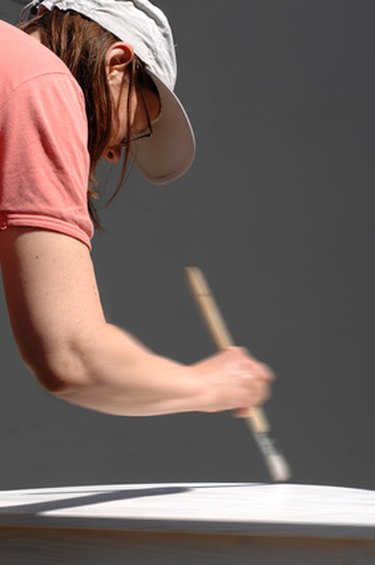
Painting can be a very time-consuming process. When you are painting rooms within your home, it's always a good idea to leave the ceilings white. If you are using a color on the walls, you have to create a straight line in corners and where the walls meet the ceiling and floor. Painter's tape is a popular choice for this purpose, but there are some alternatives. Some of these even work better than using tape.
Edgers
Video of the Day
Edgers are plastic devices that enable you to keep a steady hand while painting an edge. There are a few different kinds. The type that is most commonly found is square and has an attached pad to hold the paint. Wheels protrude from the side so you can roll it along an edge while keeping paint off the area that the wheels go over. The problem is that sometimes paint gets on the wheels when you dip the pad in the paint. This causes unwanted smears.
Video of the Day
More expensive edgers involve small paint rollers that have shields on the outside of them. These work pretty well, but they are bulkier, use a bit more paint, and are hard to work in corners.
Other Kinds of Tape
It is possible to use different kinds of tape for painting; for example, duct tape or masking tape. These are more affordable than painter's tape and stick to surfaces easier. The problem lies in that they may stick too well. This could cause chips in the paint when you remove the tape. It might be better to use other kinds of tape in outside areas or a garage, where mistakes aren't as noticeable.
"Cutting In" Technique
Professional painters use a technique called cutting in. This is a freehand way of creating the edge without the use of an edger. Using a steady hand and the side of a brush, a line is slowly made with precision. Using the edge of the brush gives the painter more control over the paint. This technique takes practice, and many novices are hesitant to try it. Try it out on a surface you don't care about before attempting it on your walls.